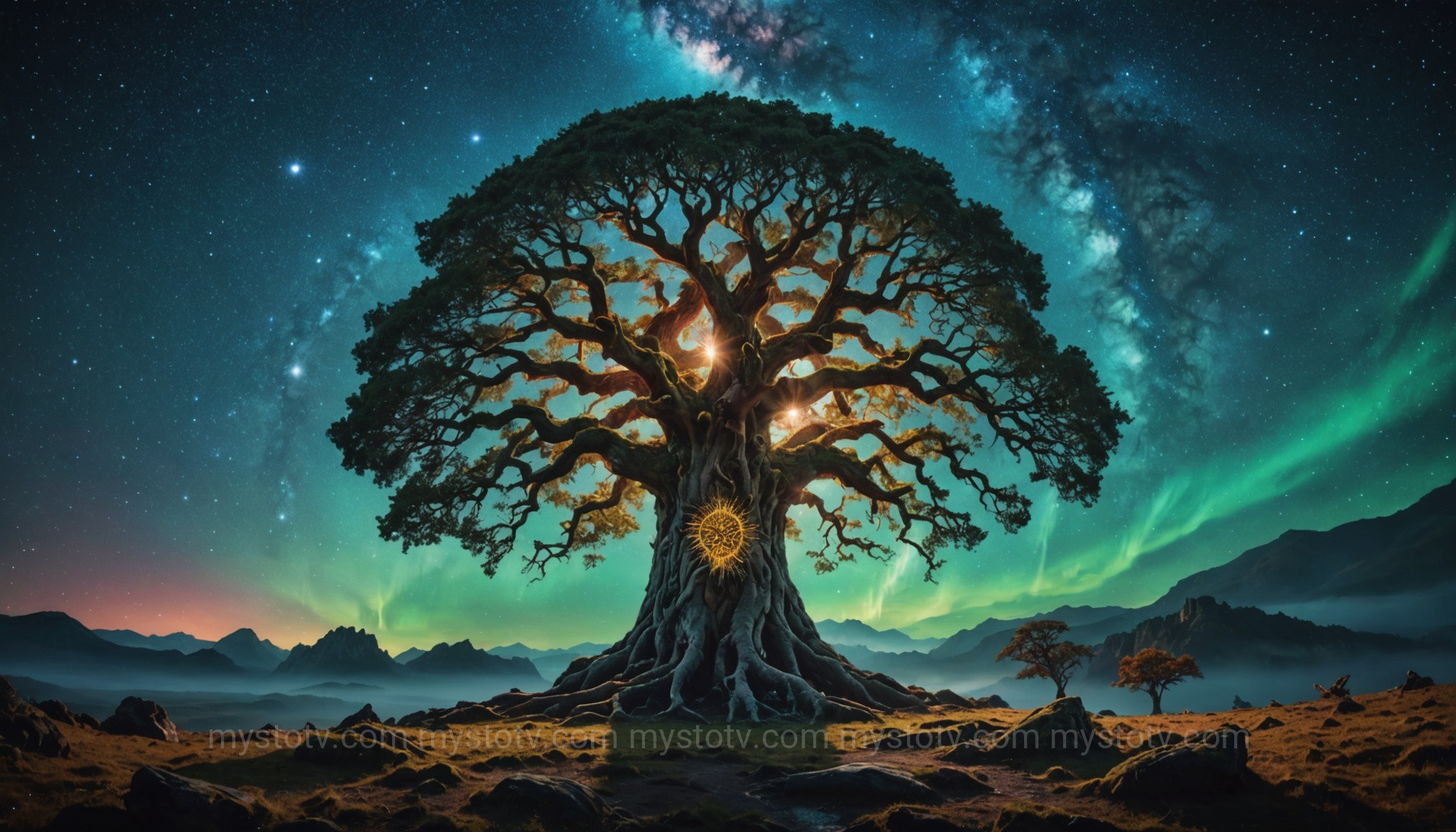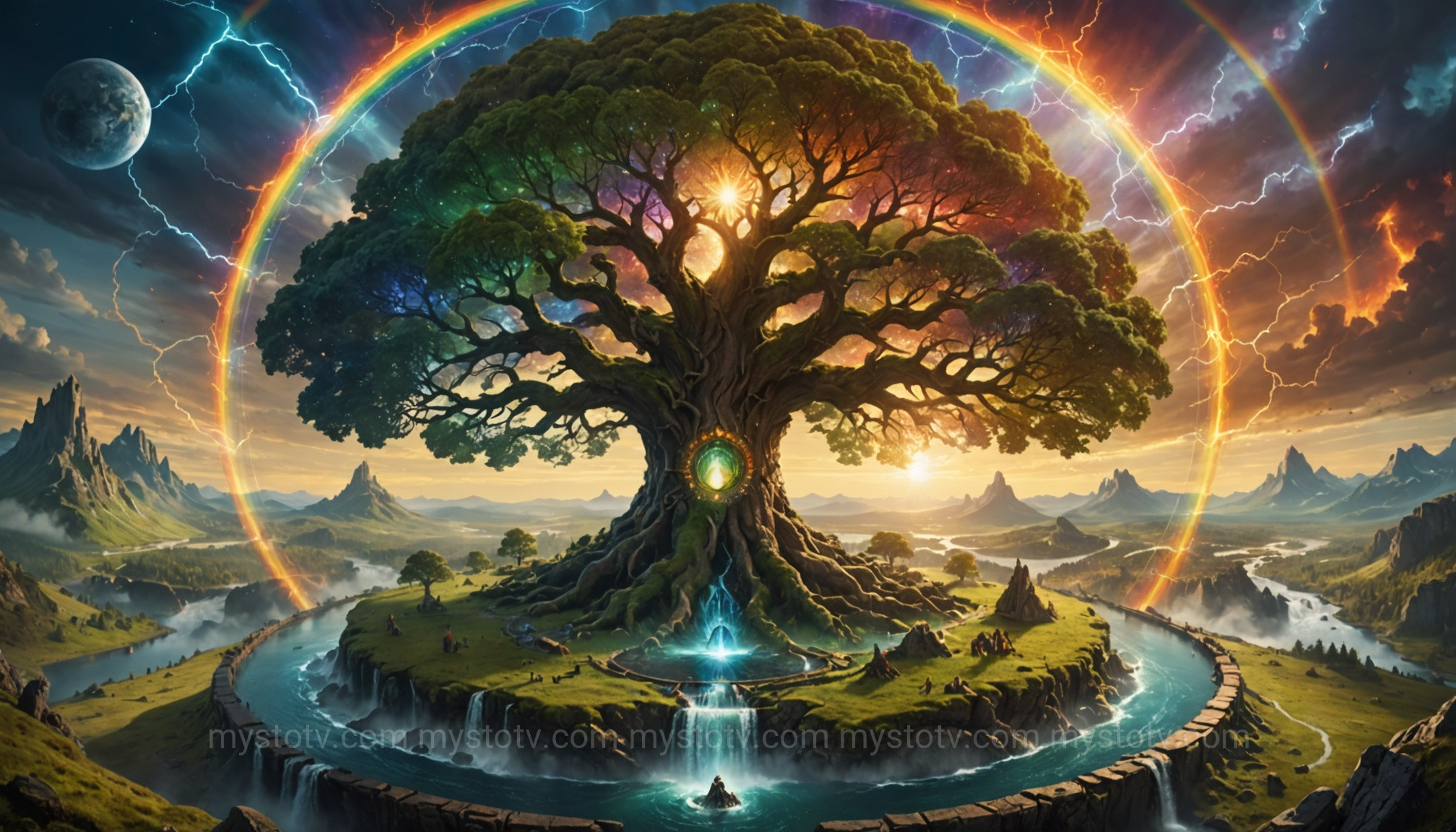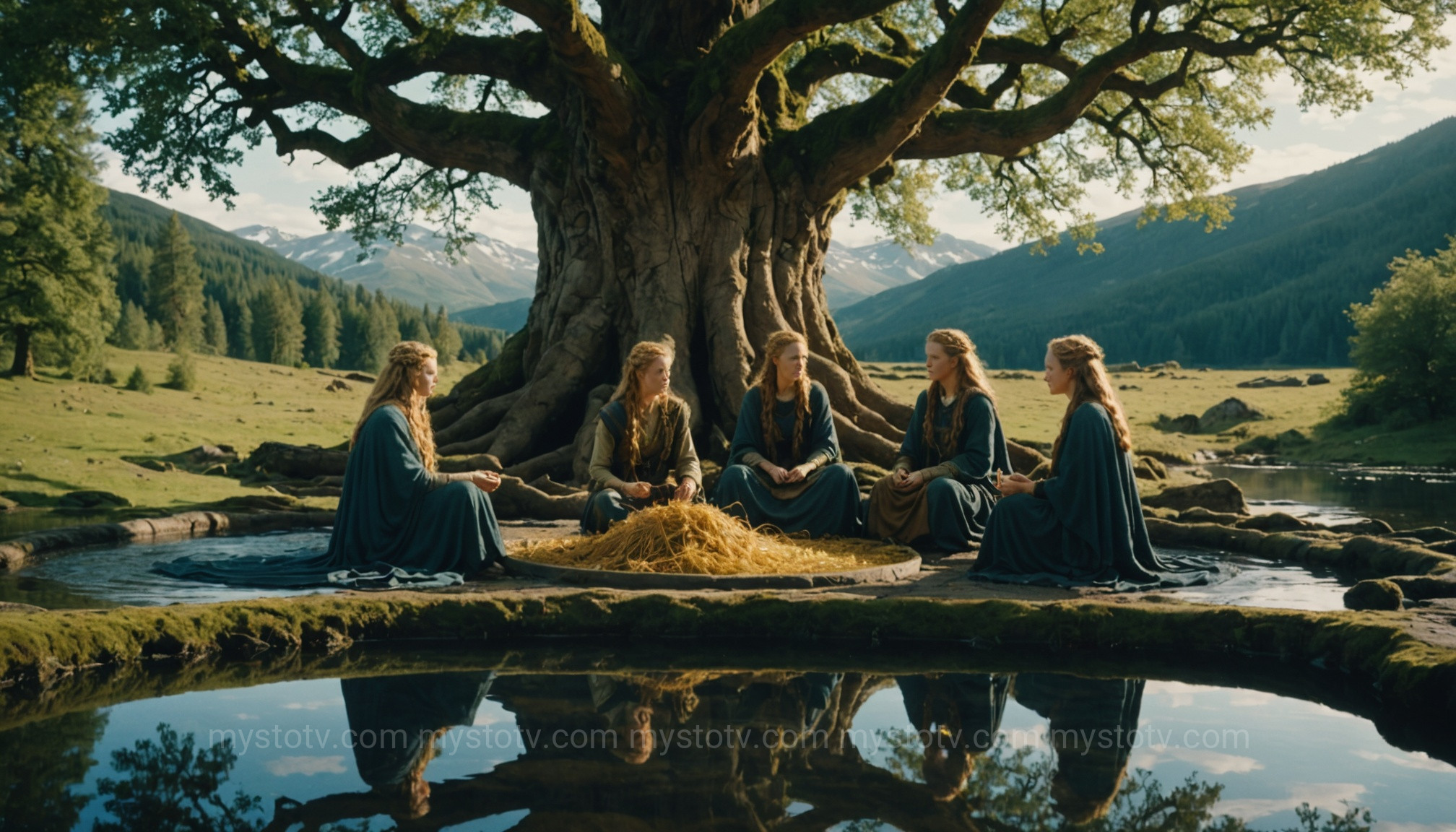Contents
- 1 What is Yggdrasil the World Tree? A Look at its Fundamental Structure
- 2 The Nine Worlds: Exploring the Branches and Roots of What is Yggdrasil the World Tree
- 3 Creatures and Inhabitants: The Diverse Life Within What is Yggdrasil the World Tree
- 4 The Wells of Wisdom and Fate: Understanding the Roots of What is Yggdrasil the World Tree
- 5 Ragnarok and Renewal: The Role of What is Yggdrasil the World Tree in the End Times
- 6 Frequently Asked Questions about What is Yggdrasil the World Tree
- 7 Conclusion: The Enduring Branches of Yggdrasil
- 8 References
What is Yggdrasil the World Tree? A Look at its Fundamental Structure

At its core, understanding what is Yggdrasil the World Tree begins with its identity as a colossal, ever-green ash tree that forms the absolute center of the Norse universe. The name "Yggdrasil" itself is a subject of scholarly debate, but a popular and compelling interpretation is "Yggr's Horse" or "Odin's Horse." "Yggr" (The Terrible One) is one of Odin's many names, and the gallows was grimly referred to as a "horse" for the hanged. This name likely alludes to the myth where Odin hangs himself from a branch of Yggdrasil for nine days and nights to gain knowledge of the runes, effectively "riding" the tree in a profound act of self-sacrifice.
Yggdrasil is not just a passive piece of cosmic geography; it is a dynamic, living entity. Its branches are said to stretch out over all of the Nine Worlds, providing a canopy for existence itself, while its three primary roots delve deep into different cosmic locations, anchoring reality. According to the primary sources, the Poetic Edda and the Prose Edda, this great ash tree acts as a cosmic axis, or axis mundi, connecting all realms of existence and serving as the primary highway for gods and other beings. It is both the structure and the lifeblood of the cosmos, suffering with it and ultimately enduring its greatest cataclysms.
Analysis: The conceptualization of Yggdrasil as "Odin's Horse" immediately elevates it from a mere plant to an instrument of divine will, knowledge, and sacrifice. It's not just a map; it's an active participant in the most pivotal stories. This framing emphasizes a core tenet of Norse belief: that wisdom is not freely given but must be won through great personal trial. Yggdrasil is the stage for this trial, making it a symbol of the connection between suffering and enlightenment.
The Nine Worlds: Exploring the Branches and Roots of What is Yggdrasil the World Tree

To truly grasp what is Yggdrasil the World Tree, one must explore the realms it holds together. The Nine Worlds are the distinct homelands of gods, giants, elves, dwarves, and humans, all nested within the branches and roots of the great tree. While the exact placement is a matter of interpretation, they are generally categorized into three levels.
The Upper Realms: The Celestial Branches
High in the branches of Yggdrasil reside the celestial worlds. The most famous is Asgard, the fortified home of the Aesir gods, like Odin, Thor, and Frigg. It is here that Valhalla, the hall of slain warriors, is located. Connected to Asgard is Vanaheim, the home of the Vanir gods, who are associated with fertility, wisdom, and nature. Finally, there is Alfheim (or Ljósálfheimr), the luminous realm of the light elves, beings described as more beautiful than the sun.
The Middle Realm: The Central Trunk
At the center of it all, wrapped by the great serpent Jörmungandr, is Midgard—the world of humanity. It is the realm we inhabit, precariously placed between the divine and the chaotic. Midgard is connected to Asgard by the Bifrost, a shimmering rainbow bridge guarded by the god Heimdall. Also considered part of this central plane are Jotunheim, the wild and often hostile land of the giants (Jötnar), and Svartalfheim (or Niðavellir), the subterranean domain of the dwarves, master craftsmen who forge legendary artifacts for the gods.
The Lower Realms: The Deep Roots
Deep in the roots lie the primordial and chthonic realms. Niflheim is a world of primordial ice, mist, and fog, considered one of the two original realms from which all life emerged. The other is Muspelheim, a land of consuming fire, home to the fire giants and their ruler, Surtr. Finally, there is Helheim (or Hel), the realm of the dead. Ruled by the goddess Hel, this is the destination for those who die of sickness or old age, a grim and shadowy place far from the glory of Valhalla.
Analysis: The arrangement of the Nine Worlds within Yggdrasil is a powerful metaphor for a hierarchical yet interconnected reality. The gods are above, humanity is in the middle, and the forces of chaos and death are below. Yet, no world is truly isolated. The Bifrost bridge, the roots of the tree, and the journeys of gods and giants show a constant interaction, conflict, and exchange between these realms. This structure suggests that life (Midgard) is a constant balancing act, influenced by divine order from above and threatened by chaotic forces from all sides. This complex cosmology highlights the tree's vital role.
Creatures and Inhabitants: The Diverse Life Within What is Yggdrasil the World Tree
Yggdrasil is far from empty; it teems with life that contributes to its cosmic drama. These creatures are not mere decorations; they are active agents in the mythology, representing eternal conflicts and forces. Understanding this ecosystem is essential to answering what is yggdrasil the world tree.
At the very top of the highest branch sits an unnamed, wise eagle, and between its eyes perches a hawk named Veðrfölnir. They observe all that happens across the Nine Worlds. Scurrying up and down the trunk is the squirrel, Ratatoskr ("drill-tooth"). His sole purpose is to ferry insults between the eagle at the top and the great serpent, Nidhogg ("malice-striker"), who gnaws at one of Yggdrasil's roots from below. This perpetual exchange of taunts represents the endless strife present in the cosmos.
Four stags or harts—Dáinn, Dvalinn, Duneyrr, and Duraþrór—roam the great boughs of Yggdrasil, nibbling on its leaves. Meanwhile, Nidhogg is not alone at the roots; he is joined by numerous other serpents who also chew on the tree's foundation, a constant threat to its stability. This continuous damage causes the tree to suffer, yet it always endures, nourished by the sacred wells at its base.
Analysis: The fauna of Yggdrasil symbolize the tensions that keep the universe in a precarious balance. The eagle represents a high, detached wisdom, while Nidhogg embodies destructive, chthonic force. Ratatoskr is the embodiment of discord and miscommunication, ensuring that the conflict between the high and the low never ceases. The stags represent a more natural, cyclical form of consumption and decay. Together, they paint a picture of a cosmos that is not static but in a constant state of being created and destroyed, held together only by the resilience of the World Tree itself.
The Wells of Wisdom and Fate: Understanding the Roots of What is Yggdrasil the World Tree

The true power and mystery of what is Yggdrasil the World Tree lies not just in its branches but in its three great roots, each leading to a sacred well of immense power. These wells are the sources of fate, wisdom, and life for the entire cosmos.
The Well of Urd (Urðarbrunnr)
This is arguably the most important of the three wells. It is the well of fate, and beside it live the three most powerful beings in the cosmos: the Norns. Named Urd (What Once Was), Verdandi (What Is Coming into Being), and Skuld (What Shall Be), these female figures weave the fates of all beings, including the gods. The gods themselves travel to this well to hold their councils. Every day, the Norns draw water from the well and take sand from around it to pour over Yggdrasil, healing the wounds inflicted by Nidhogg and the stags, ensuring its eternal greenness.
The Well of Mimir (Mímisbrunnr)
Located under the root that extends into Jotunheim, this is the well of wisdom and knowledge. It is guarded by the enigmatic being Mimir, whose knowledge is so vast because he drinks from the well daily. It is to this well that Odin traveled, seeking profound wisdom. Mimir would not allow him to drink for free; the price was one of Odin's own eyes, which he gouged out and dropped into the well. This act of sacrifice granted him unparalleled cosmic insight.
The Well of Hvergelmir (Hvergelmir)
Situated in Niflheim, Hvergelmir, or the "Bubbling, Boiling Spring," is the source of all the great rivers of the Nine Worlds. It is a font of primordial life and energy, but it is also a place of immense danger. This is the location where the dragon Nidhogg and the other serpents reside, chewing on the root of Yggdrasil. It represents the raw, chaotic, and untamable forces of nature that exist at the foundation of the world.
Analysis: The three wells represent the fundamental pillars upon which the Norse worldview rests: Fate (Urd), Wisdom (Mimir), and raw, chaotic Life Force (Hvergelmir). The idea that Yggdrasil is nourished by these sources shows that existence is dependent on this trinity. Fate is inescapable, wisdom requires sacrifice, and life itself springs from a chaotic source. This interconnected system reinforces that the cosmos is not random but governed by profound, interconnected principles anchored by the World Tree.
Ragnarok and Renewal: The Role of What is Yggdrasil the World Tree in the End Times
Even a being as mighty as Yggdrasil is not immune to the cataclysm of Ragnarok, the prophesied "doom of the gods." In the events leading up to the final battle, the entire cosmos will shudder. The Poetic Edda states, "Yggdrasil's ash trembles." This trembling is a signal that the established order is breaking down. The Bifrost bridge will shatter, monsters will be unleashed, and the gods will march to their final battle.
Despite the universal destruction, where stars vanish and the earth sinks into the sea, Yggdrasil itself endures. Though it shakes and suffers, it does not fall. After the cataclysm, a new, green earth will emerge from the waters. Two humans, Líf and Lífþrasir ("Life" and "Life's Yearner"), will have survived the devastation by hiding within the wood of Yggdrasil itself. They will emerge to repopulate the world, beginning a new cycle.
Analysis: In the context of Ragnarok, Yggdrasil's role shifts from a static structure to an ark of survival. Its endurance symbolizes the ultimate triumph of life and hope over destruction and chaos. While gods may die and worlds may fall, the core axis of life—the tree—persists, carrying the seeds of the future within it. This transforms the often-fatalistic Norse mythology into a cyclical one, where every end is also a new beginning, a concept embodied by the unwavering resilience of the World Tree.
Frequently Asked Questions about What is Yggdrasil the World Tree
Here are answers to some common questions that delve deeper into the nature of the Norse World Tree.
Is Yggdrasil a real, physical tree?
In the context of Norse mythology, Yggdrasil was understood as a literal, physical entity that formed the structure of the universe. For the people of the Viking Age, it was as real as the realms it connected. In a modern, metaphorical sense, it represents concepts like interconnectedness, the cycle of life and death, and the pursuit of knowledge. It's best understood as a mythological reality—a core component of a belief system's cosmology.
How is Yggdrasil different from other "Tree of Life" myths?
While many cultures have a "Tree of Life" or "World Tree" myth (e.g., in Slavic, Siberian, or Mesopotamian lore), Yggdrasil is uniquely characterized by its deep integration with a detailed and dramatic mythological cycle. It's not just a symbol of life; it's an active stage for gods and monsters, a source of specific types of power (fate, wisdom), and a key player in the apocalypse, Ragnarok. The presence of specific inhabitants like Ratatoskr and Nidhogg, and its direct connection to Odin's sacrifice, give it a narrative depth that is distinctively Norse.
What happens to Yggdrasil after Ragnarok?
The sources indicate that Yggdrasil survives Ragnarok. While the worlds it holds may be destroyed and remade, the tree itself endures. It serves as the shelter for the two human survivors, Líf and Lífþrasir, who will repopulate the new world. This positions Yggdrasil as a symbol of ultimate continuity and renewal, proving it is more enduring than the gods themselves.
Conclusion: The Enduring Branches of Yggdrasil
So, what is Yggdrasil the World Tree? It is far more than a simple mythological object. It is the intricate, living map of the Norse cosmos, a symbol of interconnectedness, and a testament to the belief that life, death, knowledge, and fate are all deeply intertwined. From the divine realms in its highest branches to the chaotic forces gnawing at its roots, Yggdrasil embodies the constant tension, suffering, and resilience of existence. It is the stage for Odin's sacrifice, the loom of the Norns, and the ark that carries life through the apocalypse. Its legacy endures today, a powerful reminder of a worldview where everything was connected by the branches and roots of a single, magnificent tree at the center of it all.
References
- Sturluson, Snorri. The Prose Edda. Translated by Jesse L. Byock, Penguin Classics, 2005.
- Larrington, Carolyne, translator. The Poetic Edda. Oxford University Press, 2014.
- Simek, Rudolf. A Dictionary of Northern Mythology. Translated by Angela Hall, D.S. Brewer, 2007.